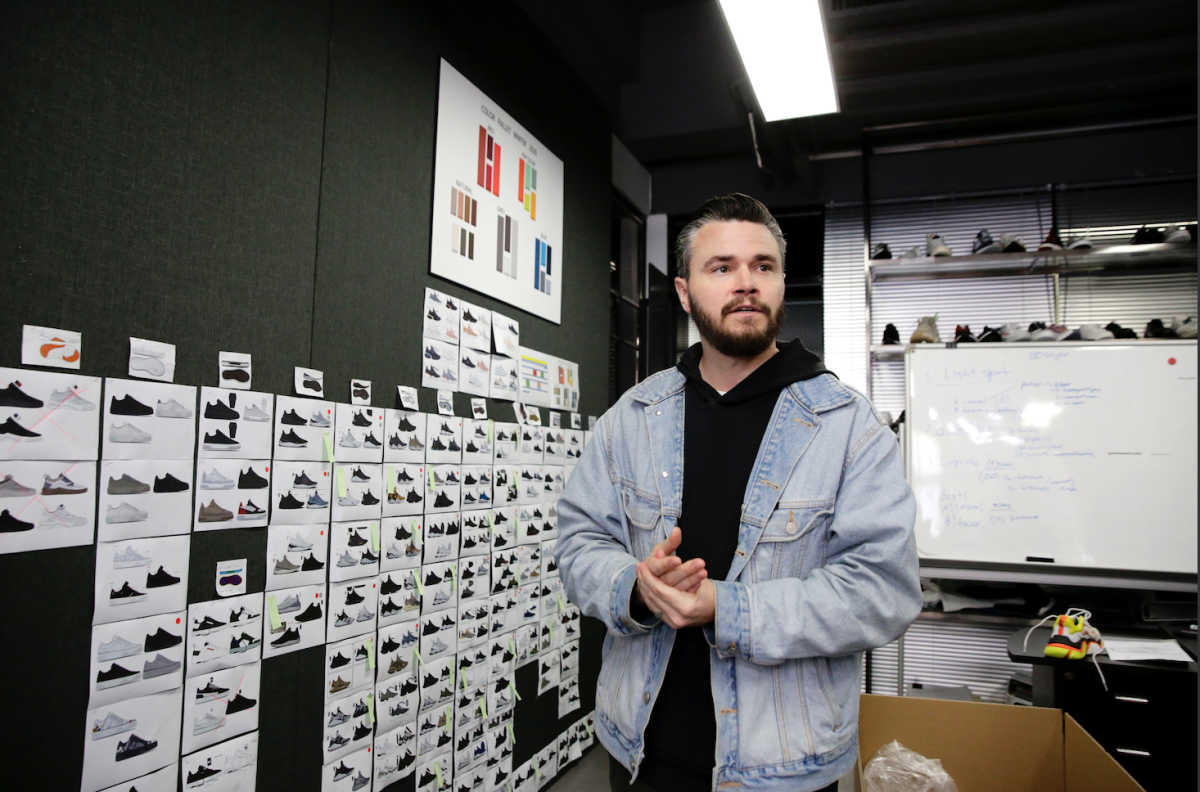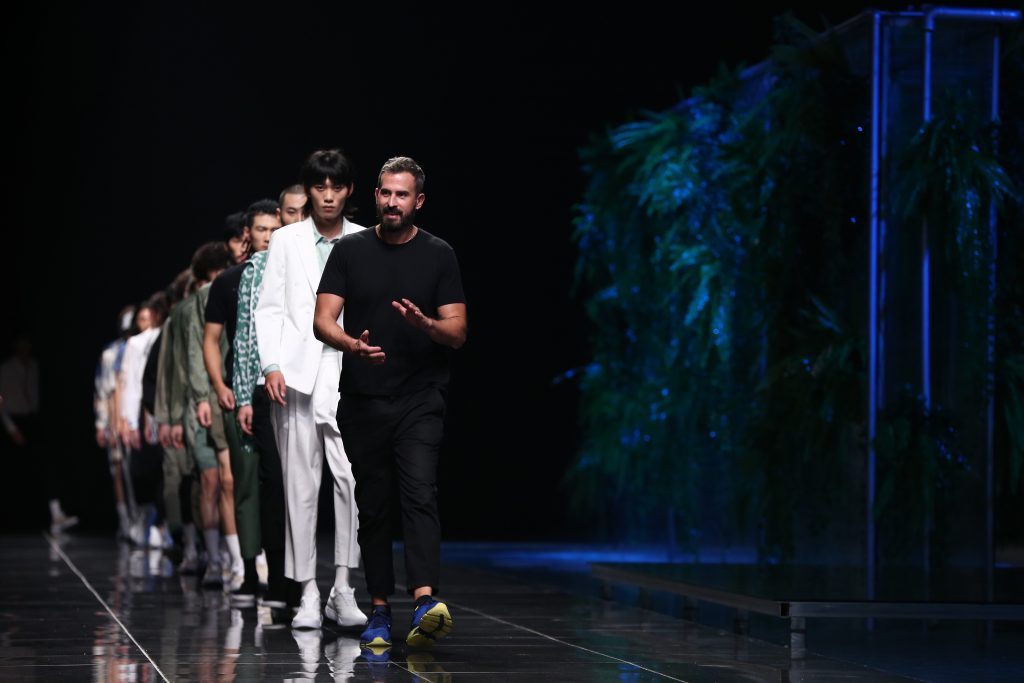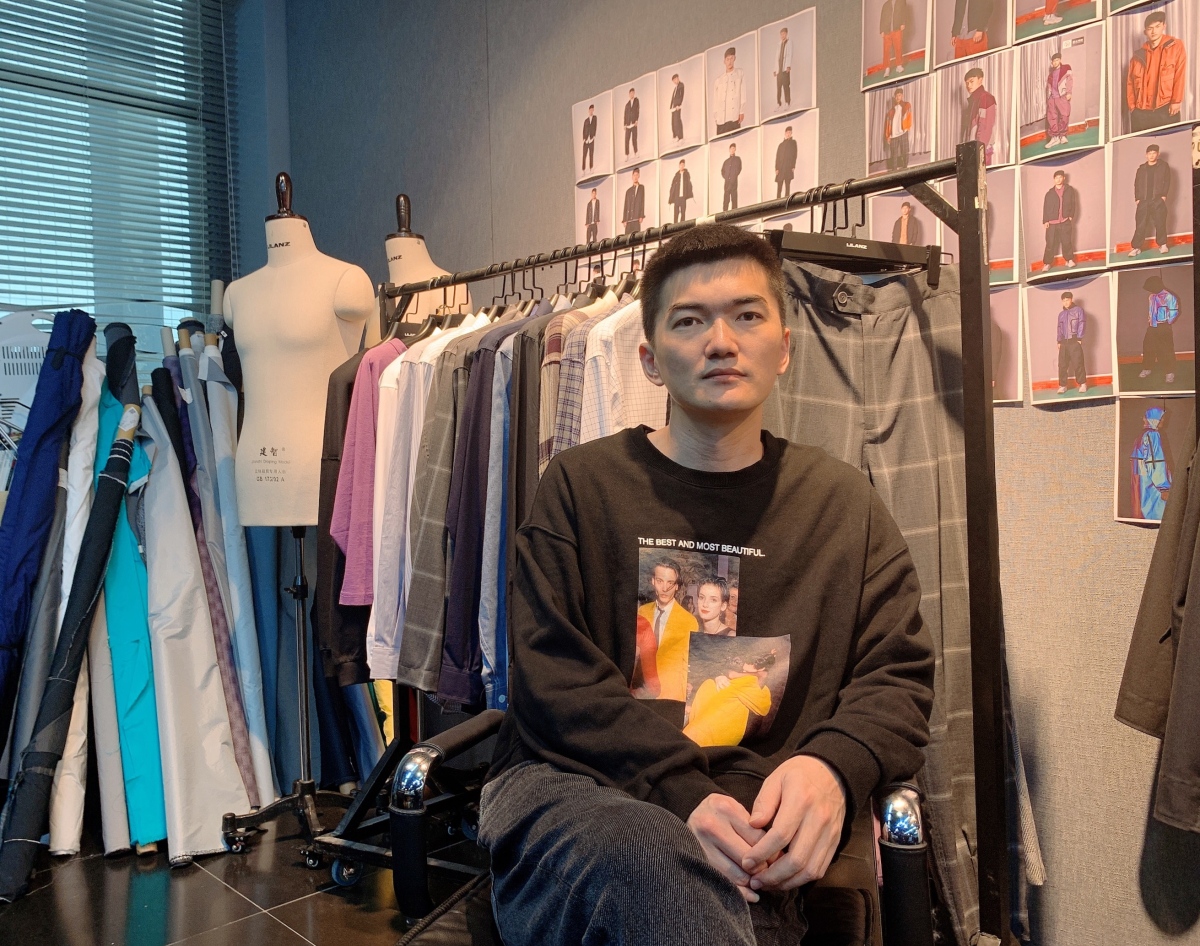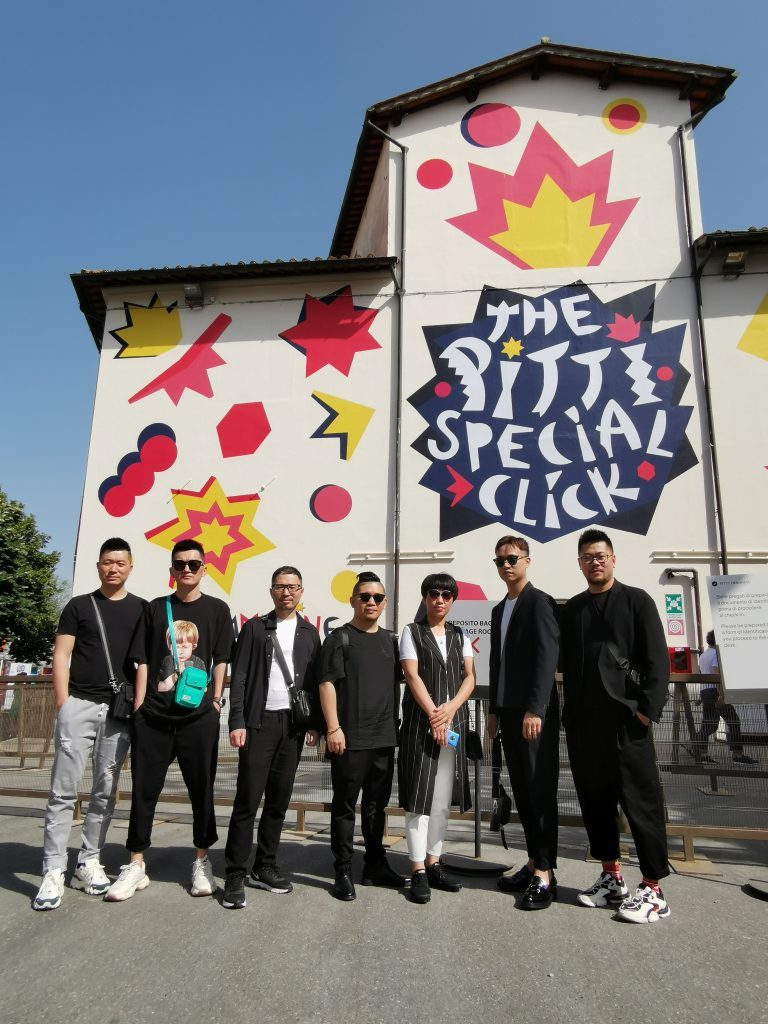How Does International Design Talent Contribute to the Brilliance of Chinese Menswear Brand LILANZ?
March 5,2020
The continuous improvement of design is the most important factor in the development of fashion brands. During the journey of any Chinese brandтs growth, it is paramount that energy is focused on how to improve the design strength of the team, how to use global design talents, and how to improve the overall brand image from the inside out; these are important considerations that help improve design that many companies are exploring and practicing.
In the past few years, LILANZ has provided the market with a real and vivid research model. LILANZ has systematically introduced international design talent into the company, and has realized the concept, тrejuvenationт through originality. If it is said that industrial upgrading through vertical integration of the supply chain is the cornerstone of LILANZ's originality, then the upgrading of internal design forces is the core element of the brand's youthful vitality.
As the leading Chinese menswear brand, LILANZ has always been тstriving to provide products with the best sense of quality, design, and fashion at optimal costs.т In 2002 т after the brand invited Ji Wenbo, a well-known designer in China, as creative director, and the famous actor Chen Daoming to be their spokesperson т LILANZ formally stepped out of Fujian Province and onto the national stage т and even the international stage to a certain degree т becoming what is now known as a "must-have" brand for dads. In 2009, LILANZ became the first menswear brand in China to enter the Hong Kong stock market, opening the door to capital upgrade for other Chinese menswear brands. As of now, LILANZ has 2,600 stores т of which 300 are in first- and second-tier cities т nationwide; its channels cover specialty stores, shopping malls, and so on. In terms of product sales layout, LILANZ's main targets are third- and fourth-tier cities, as well as its light business aims in first- and second-tier cities. The brandтs online business has also made a qualitative leap in 2019.
LILANZ first became internationalized in a true sense in 2012, when it was determined that the brand would take a step towards, and lead in, rejuvenation. That year, LILANZ bode farewell to its previous generation of designers, and invited designers from New York, Japan, the Netherlands and other countries to form an "international team;" collectively, these designers pulled together advanced design concepts and working methods from around the world to create original designs and develop what is now referred to as "LILANZ DNA". A "domestic team" made up of local designers continues to be responsible for product extension, and also controls the direction of the goods. Today, the LILANZ design team is made up of more than 100 people and is still actively introducing fresh talent.
In mid-December 2019, representatives of Luxe.co went to the Chinese shoe and clothing center in Jinjiang, Quanzhou, and had an in-depth exchange with several LILANZ designers to understand the story behind the soft power of a Chinese brand to create designs.
The Arrival of Overseas Designers: Unleashing the Power of Originality and Integrating Working Methods
Sitting in an office displaying hundreds of washed reference samples and wearing high-top canvas shoes is George Sekikuchi (Joji), a Japanese denim designer (see figure below). His experience includes working for two cowboy giants, Edwin and Leviтs for 11 and 13 years respectively. In 2013, Joji travelled to Jinjiang from Tokyo and became responsible for the construction of LILANZ jeansт product line. Joji brought a complete denim work system - from fabric selection, patterning, washing to design т to LILANZ.

In LILANZ's first year, Joji and his team тburiedт themselves in the design and selection of jeans, including styles "slim fit, tight, high waist, low waist ..., etc.", and in choosing fabrics. Of the latter, Joji comments: "There are many revolutionary treatments of denim fabrics. My task is to create authentic jeans for LILANZ. Therefore, I have chosen classic fabrics and designs that are more fashionable, more business, and more authentic.
On the back wall behind Jojiтs office desk is his mood board, where he collects various pictures and ornaments that have inspired him: "Every season we have our own theme. The theme of the previous season is from San Francisco, and the latest autumn and winter series has moved to Los Angeles."
Unlike Joji's jean-filled office, when one walks into the office of Canadian designer Dana Niddery (see figure below), we see drawings of shoes carefully categorized: outsoles and shoe shapes cover more than half of a wall, and two huge cardboard boxes next to the sofa are full of sneakers of various styles. Niddery explains his classification system to Luxe.co: тIf you classify by group, you can design more systematically. [тІ] We are working on the 2020 autumn series, getting some feedback from buyers, and a winter collection is on its way."

Before joining LILANZ in 2013, Niddery was a shoe designer for KangaROOS and ALDO. Now, he spends more than 200 days a year in China and has already been a Quanzhou hand. "The current LILANZ is completely different from what it was when I first arrived six years ago,т he explains. тI was actually very confused at first," he adds with a smile.
To understand real sales and customer feedback, Niddery often visits stores across China to talk to retail teams and consumers. In addition, he regularly flies to Tokyo, Paris and other cities: "I will spend a lot of time in Tokyo's shoe stores and they give me a lot of inspiration."
"I also chat with Lucio from time to time." Lucio is Lucio Castro, the design director of LILANZтs high-end series. Born in Argentina, Castro (see figure below) is a true тslashт who studied medicine in his early years and later studied screenwriting and directing at film school. After graduating from the latter in 1999, he studied fashion design at Parsons School of Design and then went on to work at Marc Jacobs and Donna Karan. In 2005, he became the director of menswear for Armani Exchange, and, in 2011, established a personal, eponymous brand. At the time of the interview, the film "Fin de siglo" directed by Castro was being released in North America. Chen Hongsheng, vice-president of LILANZ, gave a high appraisal of Castroтs work:
"Regardless of market feedback or teamwork, Lucio is a designer with a high degree of fit. You give him information, he knows how to interpret and transform, and the product has a high sense of quality."

Overseas and Chinese Designers: Learn from Each Other's Strengths
"Regardless of the domestic and foreign teams, all will produce a plan every quarter. After determining the plan, the international team will collide with the domestic team on the theme elements," explains Huang Shaofeng, director of fashion business design for LILANZ (see figure below).

The international team holds a ready-to-wear collection in accordance with the theme, on a quarterly basis. The domestic team will learn the design concepts from foreign designers and apply the new concepts when developing new products every season. As result of this way of working, the design concepts that have come about from Chinese and Western integration can be better presented to consumers," says Huang Shaofeng.
In terms of high-end product lines that focus on texture and design elements, Castro handles the theme and color direction while Yuan Junliang, the director of high-end boutique design (see figure below), leads the domestic team to apply Castroтs instructionsТ on fabrics and clothing.

Liang Chao, vice-president of LILANZ, pointed out that the joining of overseas designers has brought about reforms in product production design, which has been effective in improving the group's efficiency. "Originally, we made products mainly by guessing and deducing. Now we are based on data and then push back through market research. The methods and logic are more rigorous than before."
There is still room for further adjustments and improvements to be made to the brandsтworking methods. "Overseas designers pay more attention to the overall design. They are more interested in whether a single model can become popular, how many pieces can be ordered, and how many pieces can be sold." Yuan points out that this model is centered around retail orders and, therefore,also depends on the relevant skills of buyers and franchisees; these variables affect the overall calculation and presentation of LILANZтs design ability.

Optimize the Supply Chain and Support Design Exploration
Niddery has explained that the shoe design team is working with LILANZ's own production workshop to try more innovative products. "The brand gives us a lot of room to try new things, get in touch with the latest technology, and do innovative design and development,т he said. "In fact, I'm close to the production plant and I go there a lot every week. What I have learned in LILANZ in the past few years can never be learned in New York or Canada."
On Joji's mood board is also the Shanghai trash classification guide, downloaded from Weibo: "I advocate sustainable product designs. Environmental protection and sustainable development are megatrends. We put forward the concept of sustainability in the previous quarter, hoping to reduce the environmental impact during the production of denim." With the support of the supply chain, LILANZ has already introduced laser washing equipment in its denim production factory, and Joji has plans to try more environmentally-friendly denim fabrics.
Designers always participate in the LINANZ fabric exhibition, which makes each exhibitor's contact information available to the fabric administrators who are, in turn, responsible for creating samples and for final adjustments on designs based on designersт requirements. Every quarter, LILANZ also organizes fabric promotion conferences, inviting suppliers to talk with the brandтs designers, and decide how to adjust any relevant goods.
"Every month, I can discuss with 40 to 50 suppliers and choose the materials we like," explains Niddery. There is a huge variety of raw fabrics available to LILANZтs designers in Jinliang. "Many suppliers who are serving big brands like Nike, Adidas, Li Ning, etc., are in Jinjiang and this is also a big advantage for us."
In addition, LILANZтs own fabric research institute is working to develop seasonal fabrics for designers to choose from. Once a designer confirms that they will use a fabric developed by the research institute, the production of that fabric will be handed over to long-term suppliers. Fabric is always a starting point at LILANZ; it can be said that each season's work begins with the development of fabrics.
LILANZ strongly supports and prioritizes original design; Junliang explains: "As long as it can make good products, the company will not interfere with the costs of fabric development and sample production."

Introducing Chinese Independent Designers: Uniting Wider Creative Power
Since establishing a design and production system in which Chinese and Western design teams cooperate, LILANZ has been aiming to establish further collaborations. Preferred partners for the future are Chinese independent designers who understand Chinese culture and the national tide.
"Working with designers is like falling in love because designers need to understand our brand and market. Good designers use the brand's market positioning and target consumer groups as the starting point to design products that match the brand." Pan explains, "The key is to set the tone."
LILANZ provides comprehensive support for independent designers. With LILANZ, designers have the opportunity to penetrate the entire supply chain and use LILANZ's own workshop for pattern making, production and processing, LILANZтs fabric R&D centers, their testing centers, and the brandтs other full-line capabilities to assist in the development of designs and to complete a full range of products. The creative park under construction by LILANZ will also become a designerтs inspiration incubation space.

Pan emphasizes how the cooperation between Chinese brands and independent designers can complement, and can be successfully integrated into the processes of, "selling of goods and design." More cooperation content and methods are worthy of continuous exploration and experimentation.












Comments